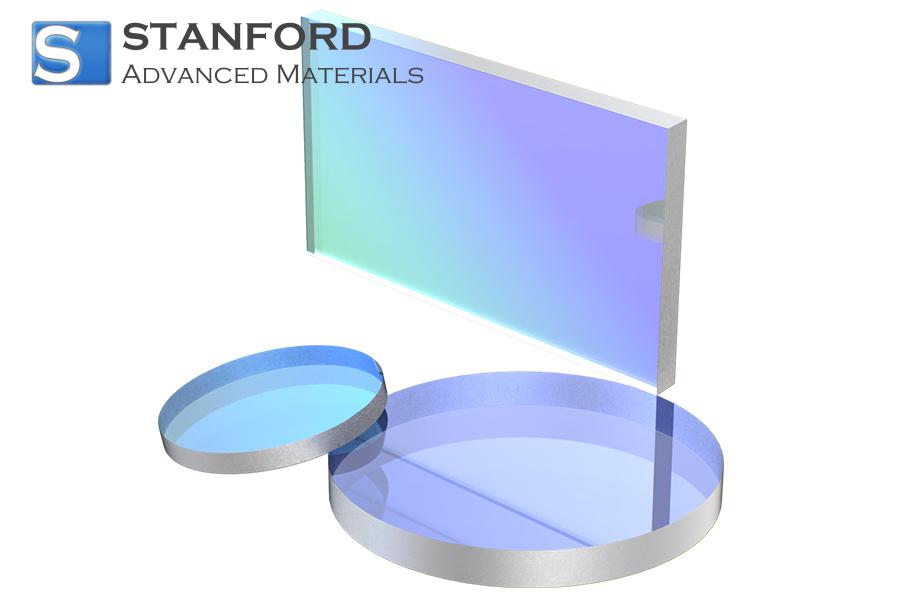Ta-W Alloys: Features And Manufacturing
Description
Tantalum-tungsten alloys have been utilised in numerous sectors for many years. They provide mechanical strength, dimensional stability and high temperature resistance. The alloys are produced in various compositions, for example TaW2.5 and TaW10, each offering specific properties.
What are Ta‐W Alloys?
Tantalum-tungsten alloys (Ta-W alloys) are metallic specialty materials composed mainly of tantalum (Ta) and tungsten (W). The most commonly used types on the market are Ta10W, which contains 10 wt% tungsten, and Ta2,5W, which contains 2.5 wt% tungsten by weight.
Ta‐W alloys are valued for their physical and chemical properties:
- High melting point: With a melting temperature of approximately 3 080 °C, these alloys remain stable under extreme heat.
- High-temperature strength: They retain their mechanical integrity at elevated temperatures and resist deformation or structural failure.
- Wear resistance: In abrasive or frictional environments, Ta‐W alloys demonstrate a long operational lifetime.
- Creep resistance: They maintain form stability under sustained high temperature loads.
- Corrosion resistance: Ta‐W alloys are highly resistant to a range of corrosive media, including wet chlorine, chlorinated water, hypochlorous acid and hydrochloric acid.
Despite these advantages, Ta‐W alloys may be prone to oxidation when exposed to air at temperatures above 400 °C. Consequently, researchers are investigating various surface treatment methods, such as composite coatings, to improve oxidation resistance and temperature cycling performance.
Overall, Ta‐W alloys are used in demanding engineering applications within aerospace, chemical processing and other sectors where a combination of high temperature endurance, mechanical strength and corrosion resistance is required.
Properties of Tantalum-Tungsten Alloys and Data Sheets
|
Property |
TaW2.5 |
TaW10 |
Notes |
|
Melting point |
~3 080 °C |
~3 080 °C |
Slight increase with tungsten content |
|
Density |
~16,6 g/cm³ |
~16,7 g/cm³ |
Minor increase with tungsten |
|
Tensile strength (RT) |
~450–550 MPa |
~600–700 MPa |
Strength increases with tungsten content |
|
Recrystallisation temperature |
~1 200 °C |
~1 400–1 600 °C |
Improves with increased tungsten |
|
Hardness (Vickers) |
~120–140 HV |
~180–200 HV |
Higher with greater tungsten |
|
Creep resistance |
Standard |
Enhanced |
Improved at elevated temperatures |
|
Corrosion resistance |
High |
High |
Comparable to pure Ta |
|
Electrical resistivity |
~25–30 µΩ-cm |
~35–40 µΩ-cm |
Increases with tungsten content |
Further information is available from Stanford Advanced Materials (SAM).
Manufacture of Tantalum-Tungsten Alloys
The manufacture of Ta‐W alloys involves several precise metallurgical processes designed to ensure uniform composition, high purity and consistent mechanical properties.
1. Powder Mixing
Ultrafine tantalum and tungsten powders are weighed according to the desired composition (e.g. 2,5 or 10 wt% tungsten) and then thoroughly mixed to achieve a homogeneous blend. Proper dispersion at this stage is necessary for the final alloy properties.
2. Compaction
The mixed powder is placed in a die and compacted under high pressure to form green bodies (preliminary shaped parts). This step provides the material with an initial form and mechanical integrity for further processing.
3. Sintering
The compacted pieces are sintered in a high-temperature vacuum furnace to metallurgically bond the powder particles. The process results in a porous precursor block which serves as the feedstock for subsequent melting.
4. Melting and Refining
The sintered billets undergo several remelting cycles in a Vacuum Arc Remelting (VAR) furnace or an Electron Beam Melting (EBM) furnace. These high-purity melting techniques ensure uniform composition and remove impurities, thereby producing dense, fully alloyed ingots.
5. Post-Melting Processing
The finished blocks are processed through forging, rolling and annealing to refine the microstructure and improve the mechanical properties. These processes adjust grain size, enhance ductility and achieve the required final dimensions and surface quality.
Comparison of TaW2.5, TaW10, etc.
Different compositions of tantalum-tungsten alloys are suited to specific applications. TaW2.5 contains approximately 2,5 wt% tungsten, resulting in an alloy that is easier to shape when a lower strength is acceptable. TaW10, in contrast, contains about 10 wt% tungsten, which produces an alloy with higher strength and heat resistance. Engineers select alloys based on the tungsten content required for each task.
The differences also affect their behaviour under heat. Higher tungsten contents generally lead to lower thermal expansion. This is significant in environments with sudden temperature fluctuations. Mechanical strength and density correlate with tungsten content. Consequently, TaW2.5 is suited to applications where a less rigid alloy is needed, whereas TaW10 is chosen when maximum performance at high temperatures and loads is required.
Conclusion
Tantalum-tungsten alloys are used in modern engineering. Their thermal properties and capability to withstand high loads make them applicable in demanding environments.
Frequently Asked Questions
Q: Why are tantalum-tungsten alloys suitable for high-temperature environments?
A: They withstand high temperatures due to their high melting point and low thermal expansion.
Q: How is the alloy composition selected for specific tasks?
A: Engineers use density, strength and thermal properties to select the appropriate alloy type.
Q: Can these alloys be used in vacuum environments?
A: Yes, their stability and heat resistance make them appropriate for use in vacuum and inert atmospheres.

 Bars
Bars
 Beads & Spheres
Beads & Spheres
 Bolts & Nuts
Bolts & Nuts
 Crucibles
Crucibles
 Discs
Discs
 Fibers & Fabrics
Fibers & Fabrics
 Films
Films
 Flake
Flake
 Foams
Foams
 Foil
Foil
 Granules
Granules
 Honeycombs
Honeycombs
 Ink
Ink
 Laminate
Laminate
 Lumps
Lumps
 Meshes
Meshes
 Metallised Film
Metallised Film
 Plate
Plate
 Powders
Powders
 Rod
Rod
 Sheets
Sheets
 Single Crystals
Single Crystals
 Sputtering Target
Sputtering Target
 Tubes
Tubes
 Washer
Washer
 Wires
Wires
 Converters & Calculators
Converters & Calculators
 Write for Us
Write for Us





 Chin Trento
Chin Trento



